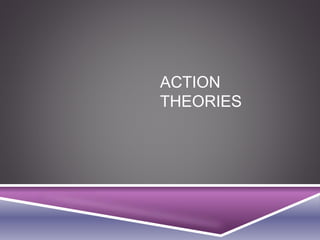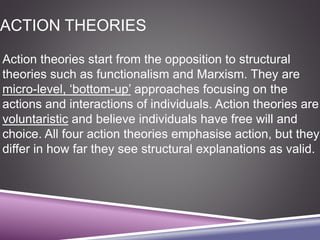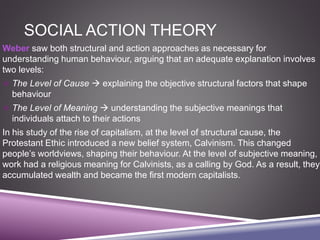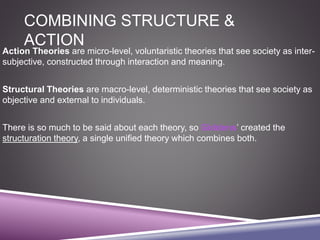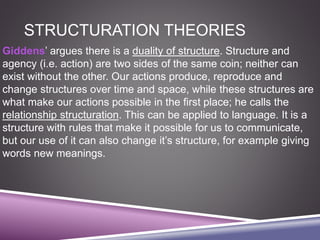This document discusses several sociological theories related to human action and agency. It begins by introducing action theories as micro-level approaches that focus on individual actions and interactions, in contrast to structural theories. It then summarizes key aspects of social action theory proposed by Weber, who saw both structural and action approaches as necessary. The document also discusses symbolic interactionism and how meanings arise through social interactions. Finally, it evaluates attempts to combine structural and action approaches, such as Giddens' structuration theory.
